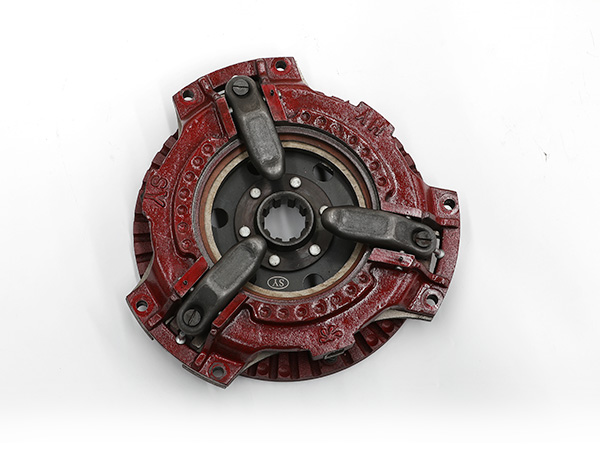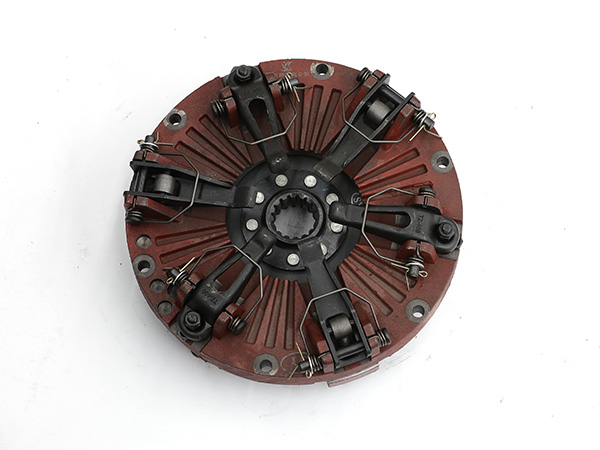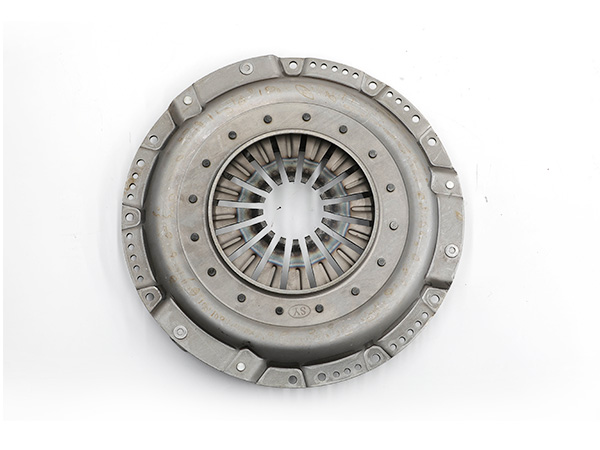The tractor clutch is through the operating mechanism, relying on the friction between the main and driven components, to temporarily separate or gradually connect the engine and the transmission to transmit power, facilitate shifting, ensure a smooth start of the tractor, and prevent damage to parts caused by overloading. During the use of the tractor, many drivers cannot use and maintain the clutch properly, and do not realize the importance of correct adjustment of the clutch. Often due to improper adjustment of the use and operation, the early wear of the clutch and the damage of the transmission parts are caused, which reduces the service life. In order to reduce the failure of the clutch and prolong its service life, it must be used and adjusted correctly.
Correct use and maintenance
(1) When using the clutch, do it quickly and completely when disengaging, and slowly release the pedal when engaging. When the tractor starts, release the pedals quickly. Obstacles and rough terrain cannot be overcome by slamming the clutch pedal.
(2) The time for stepping on the clutch pedal to separate should not be too long, generally not more than 15 to 20 s. If you need to stop for a long time, the gear lever should be in the neutral position and the pedal should be released.
(3) Do not habitually press your feet on the pedals. When driving, do not step on the clutch pedal at all times except for starting, shifting and braking at low speeds. Otherwise, the clutch is often engaged, disengaged or semi-slipped, which will accelerate the wear of the clutch friction plate and pressure plate.
(4) Try to avoid starting with a heavy load. When the tractor starts with a heavy load, the clutch is prone to serious slippage, which generates frictional heat and burns, cracks, warps and deforms the pressure plate and driven plate of the clutch, and the compression spring is annealed. The asbestos friction plate is generally within the working temperature of 400 ℃, and the friction coefficient above this temperature decreases with the increase of temperature. Therefore, during heavy-load operations, if the ploughed land encounters local resistance changes, it is necessary to shift gears in time, and the plow should be slightly lifted before starting to reduce the starting resistance.

(5) When stopping normally, the accelerator should be closed first, then the clutch should be disengaged, and the brake should be properly used to make the locomotive stop smoothly; when stopping in an emergency, the accelerator should be quickly closed, and the brake pedal should be quickly pressed, and then the clutch should be disengaged. The double-acting clutch can operate the PTO handle only after the second-stage friction plate is disengaged.
(6) In use, the friction plate adheres to oil, which will cause the clutch to slip; the clutch will be immersed in muddy water, which will cause the parts to rust. At this time, the clutch must be disassembled, the muddy water should be wiped off with cotton yarn, the oil stains and rust spots should be cleaned with gasoline, and the friction plates should be reassembled after drying in the shade or drying (no drying is allowed). When the clutch assembly is installed on the flywheel of the engine, it is best to use a mandrel for positioning, which can ensure the concentricity of the center of the clutch friction plate and the first shaft, and make the gearbox and the engine assemble smoothly.
Timely adjustment
During the use of the clutch, due to the wear and tear of the parts, the clutch will slip or the clutch will not be completely separated. Therefore, it should be adjusted in time. In order to make the clutch work normally, it is necessary to ensure that there is a clearance of 2 to 3 mm between the release bearing and the inner end faces of the three release levers, which is called the release clearance. When the clutch pedal is depressed until the clearance is eliminated, the travel required by the lower end of the separating rocker arm along the axis of the limit screw is called the free travel.
During use, due to the wear of the friction plate and the advance of the pressure plate, the free stroke will gradually decrease accordingly. Therefore, the free stroke of the clutch pedal and the separation gap of the clutch must be regularly checked and adjusted.

(1) Adjustment of the free stroke of the clutch pedal. Free travel is an important parameter to ensure the normal operation of the clutch. If the free travel of the clutch pedal is too small or there is no clearance, the clutch will slip, and it will not be able to start under load, but the engine will still run, resulting in wear and damage to the clutch. If the free stroke of the clutch pedal is too large, it is easy to cause the clutch to be incompletely disengaged, in a semi-disengaged and semi-engaged state, and it is difficult to beat the teeth or shift gears when shifting.
When the inspection finds that the free travel of the clutch pedal is too large or too small, it should be adjusted. Different models have different clutch pedal free strokes. For example, the normal value of the clutch pedal free stroke of Dongfanghong-X754 tractor is 15-25 mm, and the normal value of Dongfeng-50 tractor clutch pedal free stroke is 22-24 mm. Therefore, it should be adjusted according to the model structure and specific values.
(2) The gap between the end face of the clutch release bearing and the ball head of the release lever is the separation gap. The separation gap of the clutch is directly related to the free stroke of the pedal. The increase of the separation gap increases the free stroke of the pedal; the reduction of the separation gap reduces the free stroke of the pedal. The separation gap should also be adjusted properly. If the gap is too small, the separation will be incomplete. When shifting gears, it will be more serious when the friction surface is warped or not parallel. If the separation gap is too large, the control force will increase, that is, the driver labor intensity.

Some tractors use double-acting clutches, and the separation gap of the main and auxiliary clutches should also be checked and adjusted in time. For example, for Dongfeng-50 tractor clutch, the normal value of the gap between the end face of the release bearing and the ball head of the release lever is 2 mm. The clearance between the adjusting nut end face and the main clutch pressure plate should be (2 ±0.05) mm. When it is difficult to adjust the free stroke of the clutch pedal, the separation gap between the end face of the clutch release bearing and the ball head of the release lever can be adjusted so that both the free stroke of the clutch pedal and the clutch separation gap meet the technical requirements.
(3) When adjusting the clutch separation clearance, it is necessary to check and measure whether the heights of the three separation lever balls are consistent, so that the clearance deviation between the three separation lever balls and the end face of the separation bearing is within the range of technical requirements, that is, the three separation levers The ball heads are almost in the same plane of rotation.
For example, in the Dongfeng-50 tractor clutch, the distance between the end faces of the three release levers and the outer end surface of the flywheel is 89-90 mm, and the difference between the distances between the end faces of the three release levers is not more than 0.2 mm. If the heights of the two release lever balls are inconsistent and unsatisfactory, the normal operation of the clutch cannot be guaranteed. When the two release levers are disengaged or engaged, the forces of the two release levers are unequal, so that the main and driven elements of the clutch cannot be on the clutch shaft. The horizontal movement causes the clutch driven friction plate to tilt, which accelerates the wear of the friction plate.
(4) Check and adjust in time and eliminate the excessive axial clearance of the engine crankshaft and the excessive axial movement of the clutch shaft (the first shaft of the transmission) to achieve the best technical state.
The above is about the method of prolonging the service life of the tractor clutch. Only correct use and timely adjustment in case of failure can extend the service life to a large extent and improve the efficiency of the tractor.


